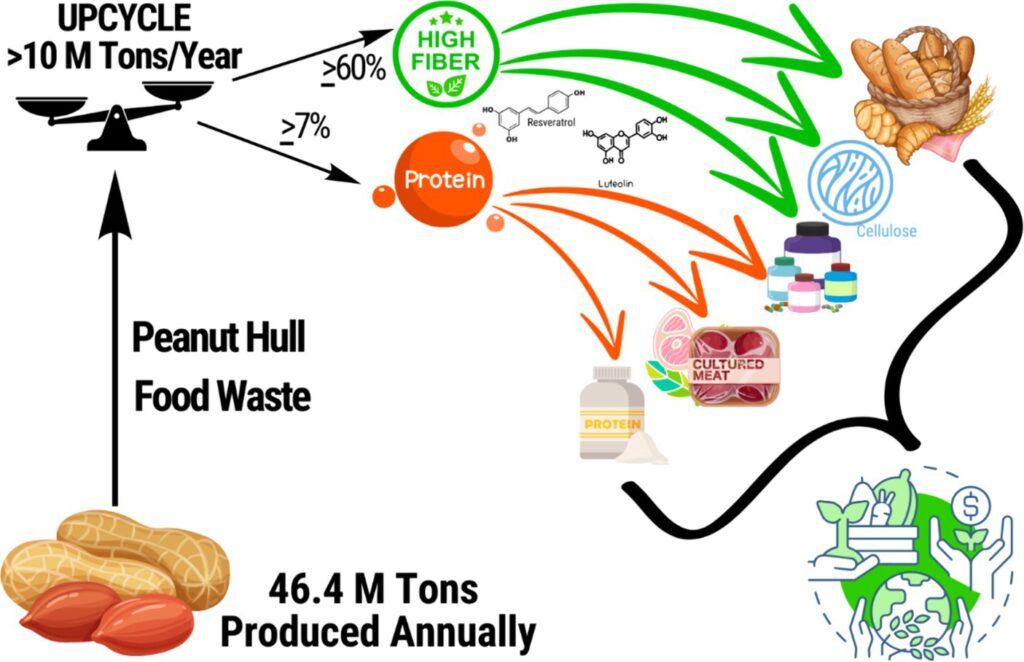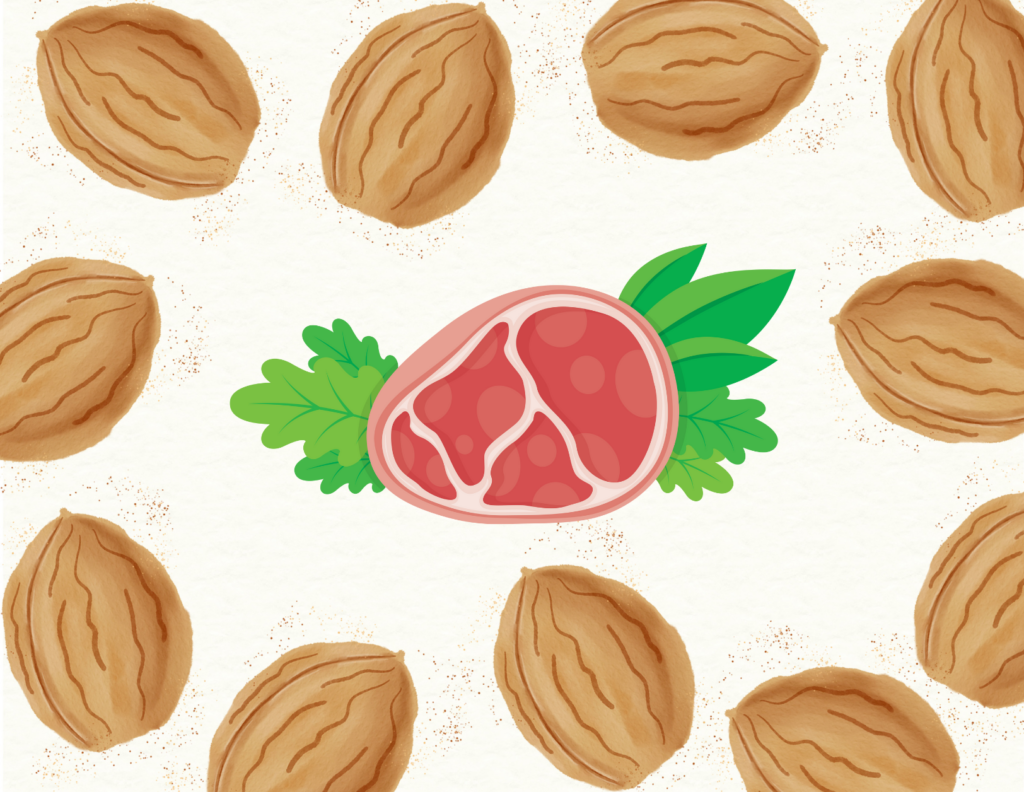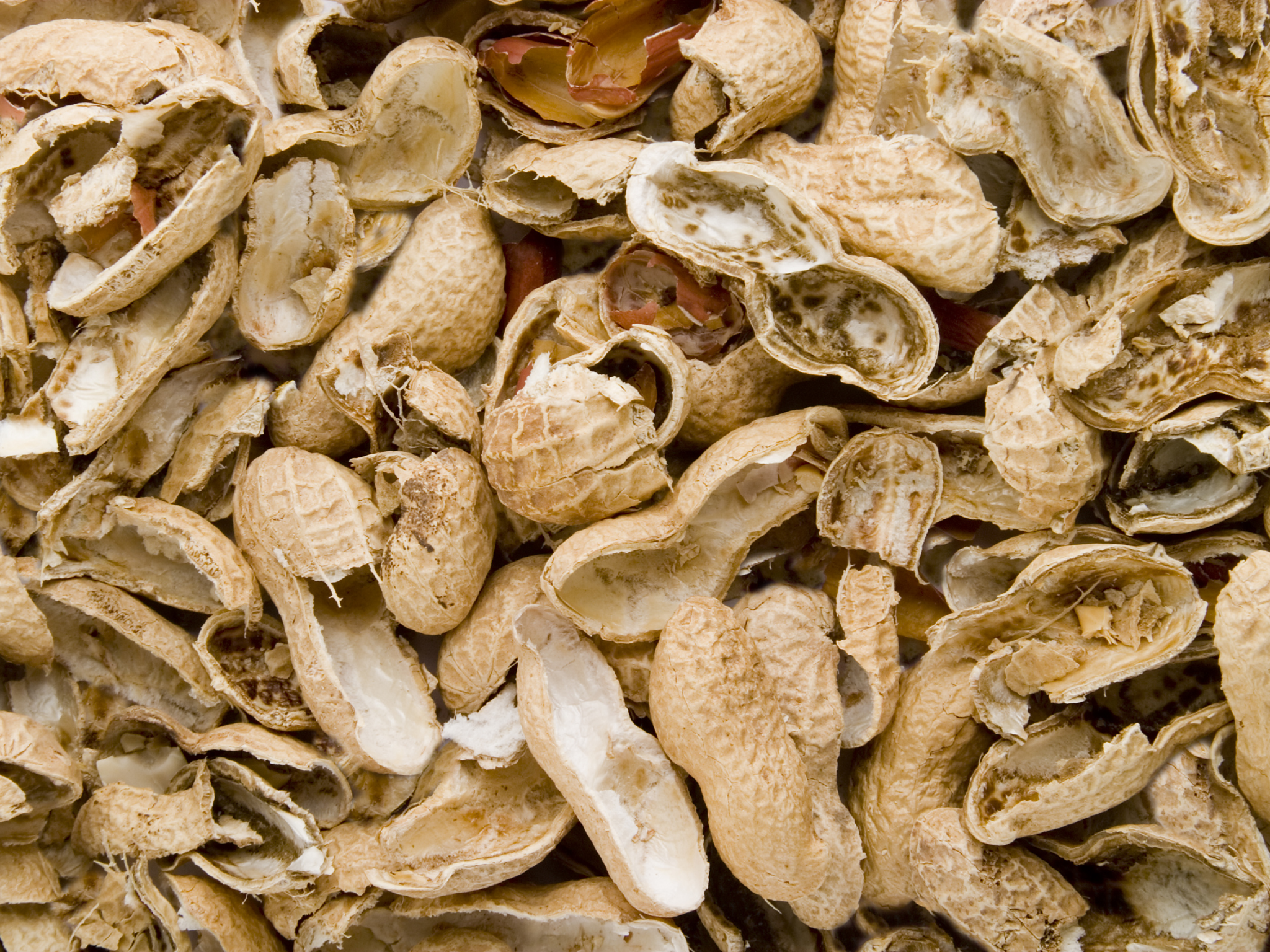Peanut Shells Can Be Upcycled to Make High-Fibre Plant-Based & Cultivated Meat, Shows Study
4 Mins Read
Instead of feeding peanut shells to livestock, we can upcycle them to make high-fibre meat analogues and growth components for cultivated meat, while cutting down on food waste.
Did you know that you can eat peanut shells? Better yet, were you aware that you can make planet-friendly meat from them?
That’s what scientists from the US are proposing, in a move they say can cut food waste, promote human health, boost food security and farm economies, reduce emissions, and thus meet several Sustainable Development Goals.
In a review published in the Frontiers journal, researchers outline how about 22% of the 46 million tonnes of peanuts produced annually is waste from the shells, resulting in a loss of over 6.5 million tonnes of dietary fibre and 595,000 tonnes of plant protein.
While peanut shells are most commonly upcycled into animal feed, a dry complete material for packaging and industrial fillers, and potentially biofuel, the study suggests that this is a “missed opportunity” since these hulls are edible to humans. It proposes methods to recapture nutrients (like protein and fibre) and process these hulls into functional ingredients for a variety of foods, including plant-based and cultivated meats.
The nutritional and food security potential of peanut shells

The scientists argue that the valorisation of peanut byproducts would significantly increase the amount of food available from current land, water and energy use, addressing hunger and benefitting farmers (who could sell the shells at a premium compared to low-cost animal feed).
Most of the greenhouse gas emissions from peanut production come from on-farm activities, and the hulls alone represent a quarter of the potential energy output. But overall, these groundnuts generate 97% fewer emissions per kg than beef, and use up 97% less land too – so using the shells to produce food for human consumption illustrates a highly sustainable way to increase food security.
Peanut shells have several nutritional advantages, according to the study. They’re a rich source of dietary fibre (making up over 60% of their dry weight) and protein (7%), alongside plant-sourced phytonutrients like polyphenols and flavonoids. This includes the anti-inflammatory flavonoid luteolin, which has been used as a source of bioactive in medicines and nutritional supplements.
The scientists cite research showing the potential of extracts derived from peanut hulls in cancer and hypertension treatments, pain management, displaying anti-diabetic properties, and reducing pathogen activity in food applications.
“The advances in the evidence about these compounds have led to widespread production of extracts from peanut hulls frequently used in pharmaceuticals in most global regions,” the study states.
However, peanut shell flour isn’t currently processed anywhere in the world, according to the researchers, and this presents an opportunity for health experts and food manufacturers. Once consumers accept it as an ingredient, adding it to foodstuffs can reduce production costs and food insecurity in at-risk regions, many of which overlap with peanut-growing areas.
Shells and husks of hazelnuts, almonds and walnuts are already being used as fibre- and protein-rich flours. But peanuts are grown in substantially larger volumes, and their shells have a much larger absolute amount of protein, fibre and nutrients than hazelnut or almond hulls. Still, no patents exist for processing peanut shells for human food uses, rendering it a market ripe for innovation.
Reimagining peanut shells as a future food

Just as almond and hazelnut flours have been utilised in baking and snacking applications, peanut hull flour can also be used to make breads, cookies, crackers, and biscuits. Fibre-rich flours from these shells can enhance baking textures due to strong binding capacity and higher water absorption. Common foods like stews and gravies can also benefit from peanut shell flour.
One interesting use case comes from the hydrolysation of peanut hull flour, which is used to extract lignans (a group of polyphenols). What’s left over is cellulose, which can be processed into a substitute for methylcellulose. This is a commonly used emulsifier, thickener, and binding agent in plant-based meats.
The targeted activation of proteins could unlock properties associated with cellulose additives, better utilising peanut shells and improving the cost efficiency of upcycling them, while also providing greater culinary versatility and an enhanced nutritional profile with fewer overall processing demands.
Meanwhile, these shells also have a high concentration of branch-chain amino acids, some of which are associated with umami flavours, especially grilled and aged meats. Plus, they can be processed in a similar way to pea protein, whose large demand is set to outsize production capacities.
“Recapturing lost protein from an alternative legume source like PHs could provide an additional source to meet that demand while increasing the efficiency of existing production systems,” says the study. Due to the retained fibre and carbohydrate content, the final sale volumes could be 20% larger than pea protein, if aiming for similar concentrations.
These peanut shell protein concentrates can have multiple applications, from a mildly peanut-flavoured protein supplement for drinks and powder, to a protein base for plant-based meat and dairy products.
Notably, they can be used as a replacement for other plant proteins in serum-free growth media, bio-ink, and structural scaffolding components of cultivated meat, important at a time when the industry is working to reduce costs through culture media innovations.
The peanut shell research also plays to the fast-growing demand for high-fibre foods amid the rise of GLP-1 agonist drugs like Ozempic and Wegovy, which have already shaken up the food industry.



